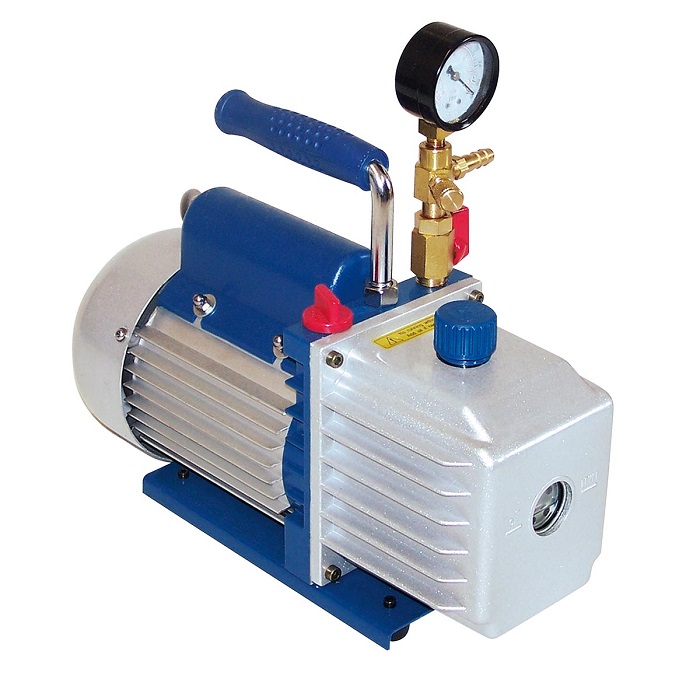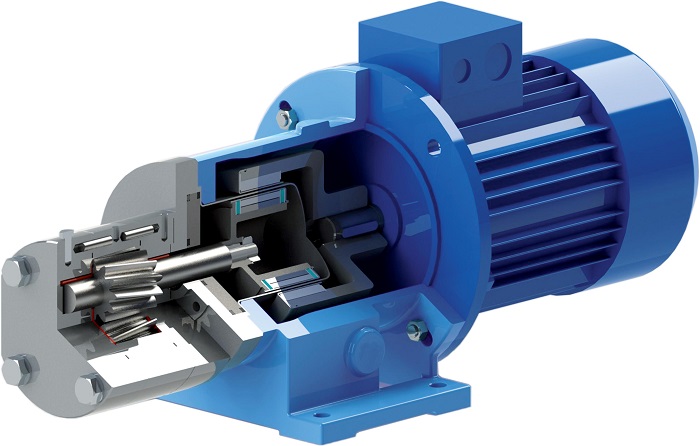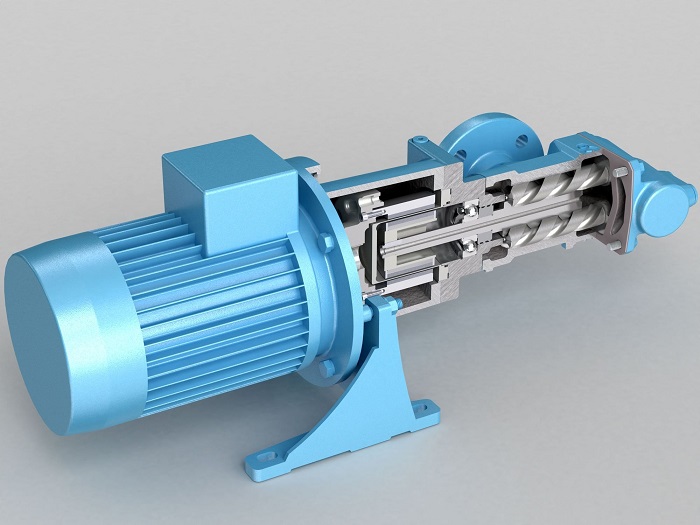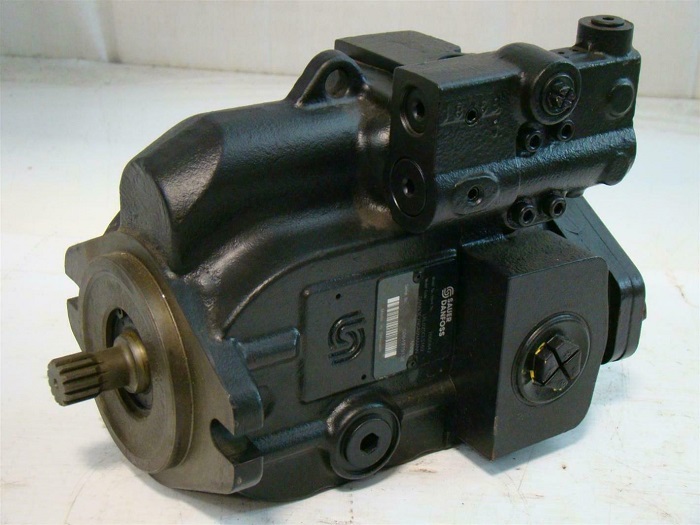Hydraulics makes a flexible and efficient form of energy transfer. With the introduction of modern machinery, the need to power them has driven innovations in hydraulic energy; hydraulic pump technology is often chosen for its efficiency and simple designs.
Hydraulic Pumps come in a number of designs and are utilized in a wide range of technical sectors. Each kind has a unique internal system that is built on the same basic concepts. Hydraulic Pumps of various types are crucial Byproducts of using Industrial Tools. Different Types of Hydraulic Pumps are provided by several suppliers and companies, different manufacturers, and a lot of Distributers and there is a lot of hydraulic pump for sale on Linquip.
There is a complete list of Types of hydraulic pump services on the Linquip website that covers all OEM fleets. Linquip vendors can assist you with this. Please contact Linquip’s Hydraulic Pumps Experts to discover more about how to connect with a diverse group of service providers who consistently deliver high-quality items.
Hydraulic pumps are sources of power for many dynamic machines. Different hydraulic pump types are capable of pushing large amounts of oil through hydraulic cylinders or hydraulic motors. In this article, we’ll introduce the different types of hydraulic pumps and their features. Follow this new blog on Linquip to find out more.
⇒ View a List of Hydraulic Pump for Sale and Their Suppliers ⇐
What is a hydraulic pump?
A hydraulic pump is a mechanical device that converts mechanical power into hydraulic energy. It generates flow with enough power to overcome pressure induced by the load.
What’s The Difference Between a Hydraulic Pump and a Hydraulic Motor?
While a hydraulic pump is connected to a prime mover by pulleys, sprockets, and gears, the hydraulic motor is connected to the load by pulleys, sprockets, and gears, allowing its main shaft to sustain a greater radial load.
Classification of pumps
- Non-positive-displacement pumps
-
- Centrifugal pumps
- Axial pumps
- Radial pumps
- Positive-displacement pumps
-
- Reciprocating pumps
- Rotary pumps
-
-
- Gear pumps
-
-
-
-
- External gear pumps
- Lobe pumps
- Internal gear pumps
- Gerotor pumps
-
-
-
-
- Screw pumps
- Vane pumps
- Piston pumps
-
-
-
-
- Axial piston pumps
- Radial piston pumps
-
-
All pumps may be classified as either positive-displacement or non-positive-displacement. Most pumps used in hydraulic systems are positive-displacement.
A non-positive-displacement pump produces a continuous flow. However, because it does not provide a positive internal seal against slippage, its output varies considerably as pressure varies. Centrifugal and propeller pumps are examples of non-positive-displacement pumps.
If the output port of a non-positive-displacement pump were blocked off, the pressure would rise, and output would decrease to zero. Although the pumping element would continue moving, the flow would stop because of slippage inside the pump.
In a positive-displacement pump, slippage is negligible compared to the pump’s volumetric output flow. If the output port were plugged, the pressure would increase instantaneously to the point that the pump’s pumping element or its case would fail, or the pump’s prime mover would stall.
Positive-displacement pumps are grouped into fixed or variable displacement. A fixed displacement pump’s output remains constant during each pumping cycle and at a given pump speed. Altering the geometry of the displacement chamber changes the variable displacement pump’s output.
Fixed displacement pumps make little noise, so they are perfect for use in for example theatres and opera houses. Variable displacement pumps, on the other hand, are particularly well suited in circuits using hydraulic motors and where variable speeds or the ability to reverse is needed.
The most common types of hydraulic pumps
- Reciprocating pumps
- Rotary pumps
-
- Gear pumps
-
-
- External gear pumps
- Lobe pumps
- Internal gear pumps
- Gerotor pumps
-
-
- Screw pumps
- piston pumps
-
-
- Axial piston pumps
- Radial piston pumps
-
-
- Vane pumps
Different types of hydraulic pumps are used in a wide scope of engineering fields and are available in a variety of designs. Each type has a different internal mechanism based on the same fundamental principles. So let us introduce some of the common types.
- Reciprocating pumps: The reciprocating type pump is the most elementary positive-displacement pump. As the piston extends, the partial vacuum created in the pump chamber draws liquid from the reservoir through the inlet check valve into the chamber. The partial vacuum helps seat firmly the outlet check valve. The volume of liquid drawn into the chamber is known because of the geometry of the pump case, in this example, a cylinder.
As the piston retracts, the inlet check valve reseats, closing the valve, and the force of the piston unseats the outlet check valve, forcing liquid out of the pump and into the system. The same amount of liquid is forced out of the pump during each reciprocating cycle.

- Rotary pumps: In a rotary-type pump, rotary motion carries the liquid from the pump inlet to the pump outlet. Rotary pumps are usually classified according to the type of element that transmits the liquid into Gear pumps, Vane pumps, Screw pumps, and Piston pumps.
- Gear Pumps: Probably the simplest and most commonly used types of hydraulic pumps today and they are easily maintained and economic. This design is characterized as having fewer moving parts, being easy to service, more tolerant of contamination than other designs, and relatively inexpensive. Gear pumps are fixed displacement, also called positive displacement, pumps. This means the same volume of flow is produced with each rotation of the pump’s shaft. Gear pumps are rated in terms of the pump’s maximum pressure rating, cubic inch displacement, and maximum input speed limitation.
Four types of gear pumps exist Internal gear pumps, Lobe pumps, External gear pumps, and Gerotor pumps.
- External Gear Pumps: External Gear pumps rely on the counter-rotating motion of meshed external spur gears to impart motion to a fluid. They are generally fixed-displacement designs, very simple and robust. They are commonly found as close-coupled designs where the motor and pump share a common shaft and mounting.
Oil travels around the periphery of the pump housing between the teeth of the gears. On the outlet side, the meshing action of the teeth decreases the volume to discharge the oil. The small amount of oil that is trapped between the re-meshing gears discharges through the Elkins and back to the pump’s suction side. External gear pumps are very popular in fixed-displacement hydraulic applications as they are capable of providing very high pressures.
- Lobe pumps: Lobe pumps work on a similar principle of working like that of external gear pumps. However, in Lobe pumps, the lobes do not make any contact like the external gear pump. Lobe contact is prevented by external timing gears located in the gearbox. Similar to the external gear pump, the lobes rotate to create expanding volume at the inlet. Now, the fluid flows into the cavity and is trapped by the lobes. Fluid travels around the interior of the casing in the pockets between the lobes and the casing. Finally, the meshing of the lobes forces the liquid to pass through the outlet port. The bearings are placed out of the pumped liquid. Therefore the pressure is limited by the bearing location and shaft deflection.
Lobe pumps are frequently used in food applications because they handle solids without damaging the product. Large-sized particles can be pumped much more effectively than in other positive displacement types. As the lobes do not make any direct contact 9 therefore, the clearance is not as close as in other Positive displacement pumps. This specific design of the pump makes it suitable to handle low viscosity fluids with diminished performance.
- Internal Gear Pumps: The internal gear pump uses the meshing action of an internal and external gear combined with a crescent-shaped sector element to create fluid flow. The axis of the external gear is offset from that of the internal gear. As the two gears rotate, their coming out of and into mesh creates suction and discharge zones. The sector serves as a barrier between suction and discharge. Another internal gear pump, the Gerotor, uses meshing trochoidal gears to achieve the same suction and discharge zones without needing a sector element.
- Gerotor pumps: Gerotor is a positive displacement pump. The name Gerotor is derived from “Generated Rotor”. At the most basic level, a Gerotor is essentially one that is moved via fluid power. Originally this fluid was water, today the wider use is in hydraulic devices. A Gerotor pump is an internal gear pump without the crescent.
The important advantages of these pumps are high-speed operation, constant discharge in all pressure conditions, bidirectional operation, less sound in running condition, and less maintenance due to only two moving parts and one stuffing box, etc. However, the pump is having some limitations such as medium pressure operating range, clearance is fixed, solids can’t be pumped, and overhung load on the shaft bearing, etc.
- Screw pumps: Screw pumps (fixed displacement) consist of two Archimedes’ screws that intermesh and are enclosed within the same chamber. These types of hydraulic pumps are used for high flows at relatively low pressure. They have used onboard ships where a constant pressure hydraulic system extended through the whole ship, especially to control ball valves but also to help drive the steering gear and other systems. The advantage of these hydraulic pump types is the low sound level; however, their efficiency is not high.
The major problem of screw pumps is that the hydraulic reaction force is transmitted in a direction that’s axially opposed to the direction of the flow.
There are two ways to overcome this problem:
- put a thrust Elking beneath each rotor;
- create a hydraulic balance by directing a hydraulic force to a piston under the rotor.
Types of screw pumps are as follows.
- single end
- double end
- single rotor
- multi rotor timed
- multi rotor untimed.
- Piston Pumps: When high operating pressures are required, these hydraulic pump types are often used. Piston pumps will traditionally withstand higher pressures than gear pumps with comparable displacements; however, there is a higher initial cost associated with piston pumps as well as a lower resistance to contamination and increased complexity. This complexity falls to the equipment designer and service technician to understand to ensure the piston pump is working correctly with its additional moving parts, stricter filtration requirements, and closer tolerances.
There are two types of piston pumps: Axial Piston Pumps and Radial Piston Pumps
- Axial Piston Pumps: Axial piston pumps use axially mounted pistons that reciprocate within internal cylinders to create alternating suction and discharge flow. They can be designed as variable-rate devices making them useful for controlling the speeds of hydraulic motors and cylinders. In this design, a swashplate is used to vary the depth to which each piston extends into its cylinder as the pump rotates, affecting the volume of discharge. A pressure compensator piston is used in some designs to maintain a constant discharge pressure under varying loads.
- Radial Piston Pumps: Simple versions are fixed displacement type, but many come as a variable displacement option. An odd number of radial pistons are arranged around a rotating shaft. This is encased within an eccentric ring. As the shaft rotates the distance between the eccentric ring and shaft centerline varies, hence the pistons move through a suction and pressure cycle. The driven shaft is often hollow and allows fluid to enter and exit the pump. The displacement changes varying the amount of eccentricity; this is done either manually via adjustment screws or hydraulically with a piston. These are excellent for high pressure and are strong and reliable.
- Vane Pumps: These types of hydraulic pumps use a series of rigid vanes, mounted in an eccentric rotor, which sweep along the inside wall of a housing cavity to create smaller volumes, which forces the fluid out through the discharge port. In some designs, the volume of the fluid leaving the pump can be adjusted by changing the rotational axis of the rotor for the pump housing. Zero flow occurs when the rotor and housing axes coincide.
So, now you know everything you needed to know about the different types of hydraulic pumps and their characteristics. If you have experience with any of these hydraulic pump types, share your thoughts with us in the comment section. You can always sign up on our website if you want our experts to answer your most complicated questions regarding this field.
Download Types of Hydraulic Pumps PDF
Buy Equipment or Ask for a Service
By using Linquip RFQ Service, you can expect to receive quotations from various suppliers across multiple industries and regions.
Click Here to Request a Quotation From Suppliers and Service Providers
Read More on Linquip
- Types of Centrifugal Pumps: All Classification & Working Principles
- All About DC Motor Types and Their Applications
- Pump Curve: All You Should Know About Definition and Read One
- What is Hydraulic Pump: Learn The Basics, Boost Your Knowledge
- How Does a Hydraulic Pump Work? A Definitive Guide
- Types of Screw Pumps: How Each Type Gives Benefits?
- Types of vane pumps: review the types, select the best
- 3 Types of Well Pumps + Applications
- 3 Types of Heat Pump + Working Principle ( Clear Guide)
- 3 Types of Oil Pumps + Working Principle & PDF
- 10 Parts of Hydraulic Pump + PDF & Function
- Working Principles of Hydraulic Pump
- Types of Fire Hydrant Systems
- Types of Piston Pumps
- Types of Dynamic Pumps
- Types of Fuel Pump
- The 10 Best Condensate Pumps of 2022: A Complete Guide
- The 10 Best Electric Air Pump in 2022 (Clear Guide)
- Hydraulic Pump Working Principles: Ultimate Guide
- What is Hydraulic Pump: Learn The Basics, Boost Your Knowledge
- How Does a Hydraulic Pump Work? A Definitive Guide







What an informative article about pumps and how piston kinds are useful since it offers the complexity of having an intricate filter system. If I am working with these systems, I would understand how choosing the best quality equipment can also offer acceptable performance. I think investing in quality and durable system parts will always be a good idea.
Nice let’s countinue I proud
Hello, Very Nice Article On Hydraulic Pump, And You Have Very Beautifully Describe The Difference Between a Hydraulic Pump and a Hydraulic Motor. Keep Sharing Information Like This…Thank You So Much
Great peace of information regarding hydraulic pump types.
Mahaveer Distributors is the leading distributors & suppliers of ITR Hydraulic Pumps in India.
Thanks for visiting our website and leaving your comment, Mahaveer! We hope to hear from you again in our other posts.
Thank you sharing such an amazing information.
The hydraulic pump consists of ten parts. These include the casing, runner wheels, shaft, bearings, seals, oil tank, pipelines, contact with an electrical, hydraulic activator, and relief valve.
Thanks for sharing your experience with us! You can also visit our industrial directories, where you can find thousands of various industrial equipment based on your application and demand.